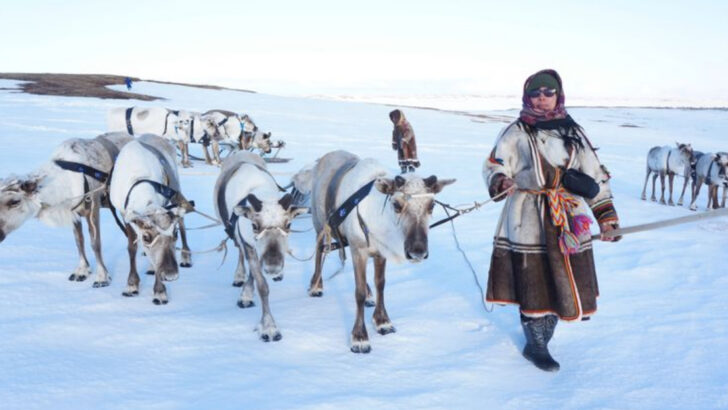Reindeer can’t fly—but they’ve still managed to soar into legend.
We picture them pulling sleighs, crunching snow under shiny hooves, and wearing jingling bells like fashion statements.
But the truth?
It’s weirder, wilder, and sometimes… a little less merry.
These creatures are far more than holiday mascots.
They’re tundra survivors, nose-to-hoof wonders built for icy extremes and nonstop migration.
And while some of their quirks make them even cooler than the stories suggest—
others might leave you side-eying your childhood picture books.
Ready to ruin—or improve—everything you thought you knew about Santa’s herd?
Let’s pull back the velvet curtain and meet the real reindeer.
Reindeer Antlers: Nature’s Crown
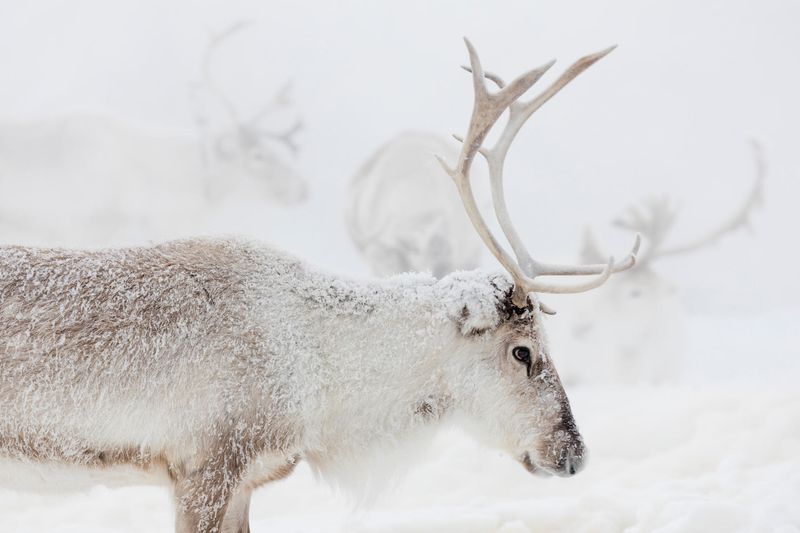
Reindeer are the only deer species where both males and females grow antlers. These antlers are not just for show; they play a crucial role during the mating season. Males and females use them to compete for mates, and they shed them annually. Interestingly, female reindeer keep their antlers through the winter. This unique feature allows them to dominate food sources, particularly in snowy conditions. The sheer size and grandeur of these antlers make them a symbol of strength and resilience in the wild. Antlers grow back larger every year, showcasing the reindeer’s vitality.
Reindeer’s Superpower: Ultraviolet Vision
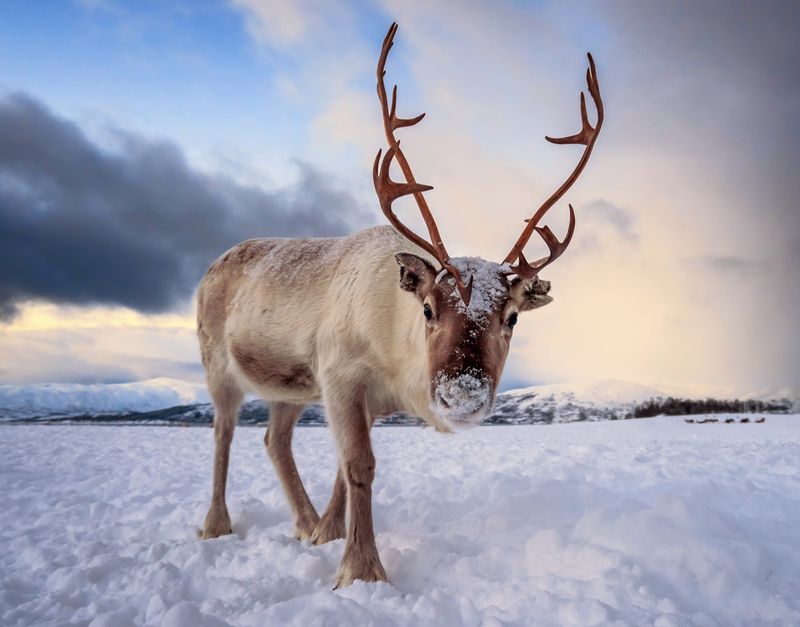
Reindeer have an extraordinary ability: they can see ultraviolet light. This adaptation is crucial for survival in the Arctic Circle, where they primarily reside. The ability to detect ultraviolet light helps them find food and avoid predators in the snowy, white landscapes. Lichens, a primary food source, absorb UV light, making them stand out against the snow. This remarkable vision also aids in spotting wolves and other threats that blend into the environment. It’s a superpower that ensures their survival in one of the harshest climates on Earth.
The Great Reindeer Migration
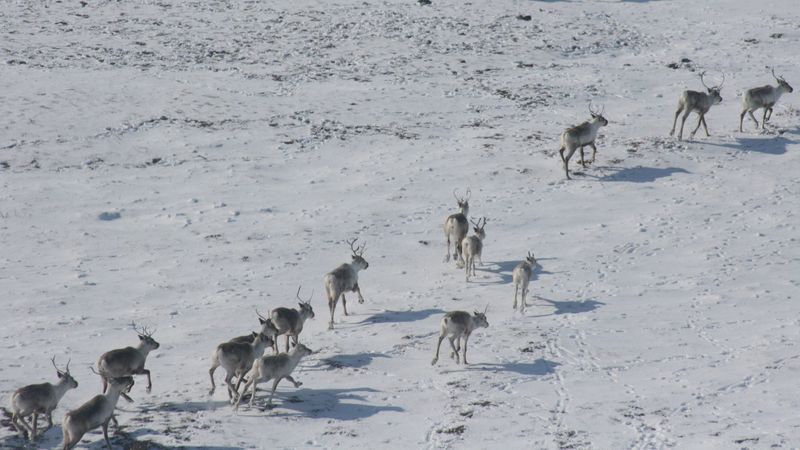
One of nature’s most awe-inspiring events is the great reindeer migration. Thousands of reindeer travel over 3,000 kilometers annually across the Arctic tundra. This journey is driven by the search for food and breeding grounds. Reindeer can cover up to 55 kilometers a day, showcasing their endurance and stamina. The migration ensures the survival of the species, allowing them to find new pastures and avoid harsh weather. Witnessing this migration is a spectacle of nature’s resilience and the reindeer’s determination to thrive in the wilderness.
Reindeer: The Original Flyers
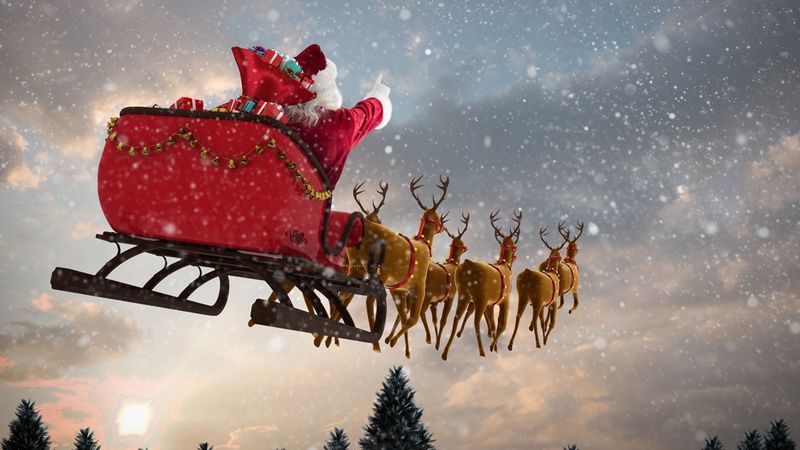
While reindeer can’t actually fly, their association with Santa Claus and his sleigh has captivated imaginations for generations. This folklore likely originated from ancient Sami and Norse mythology, where reindeer were seen as mystical creatures capable of traversing the skies. The story of flying reindeer was popularized in the 19th century, becoming a staple of Christmas lore. This enchanting tale adds a layer of magic to the holiday season, embodying the spirit of wonder and belief. Despite reality, the image of reindeer flying through snowy skies remains eternally charming.
Reindeer Communication: The Click Sound
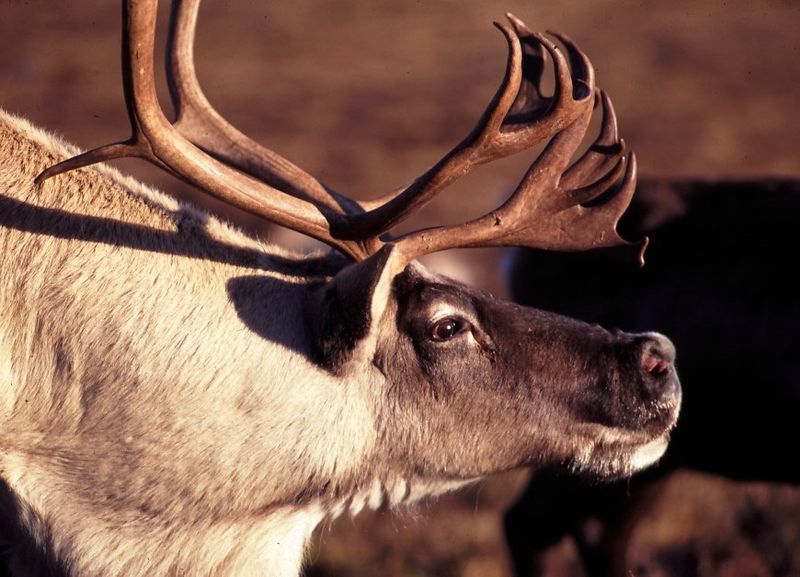
Reindeer have a unique way of communicating: they produce a clicking sound as they walk. This sound comes from tendons slipping over bones in their feet, and it’s particularly useful in the Arctic’s low-visibility conditions. The clicking helps reindeer stay in contact with each other, ensuring the herd remains together. It also aids in alerting others of nearby dangers. This remarkable adaptation highlights the reindeer’s ingenious methods of survival in challenging environments, where visual cues may be limited. The sound is a gentle reminder of their presence, even in heavy snow.
Reindeer Milk: A Nutrient-Rich Superfood

Reindeer milk is exceptionally rich in nutrients, making it a vital resource for the Arctic indigenous peoples. It contains higher fat and protein content compared to cow’s milk, providing essential nourishment during harsh winters. The milk’s richness allows reindeer calves to grow rapidly in short Arctic summers. For the indigenous communities, reindeer milk is both a food source and a cultural staple. This nutrient-packed milk supports the survival of reindeer calves and humans alike, illustrating the symbiotic relationship between the species and their environment. It’s a superfood born of necessity and tradition.
Climate Change: Threat to Reindeer

Climate change poses a significant threat to reindeer populations. Rising temperatures in the Arctic lead to changes in their habitats, affecting food availability. Warmer winters result in layers of ice forming over the snow, making it difficult for reindeer to reach lichens. This environmental shift forces reindeer to expend more energy, impacting their overall health and reproduction rates. The plight of reindeer highlights the broader challenges faced by Arctic wildlife due to climate change. It serves as a reminder of the urgent need for environmental conservation efforts to protect these majestic creatures.
The Misleading Rudolph: Male or Female?
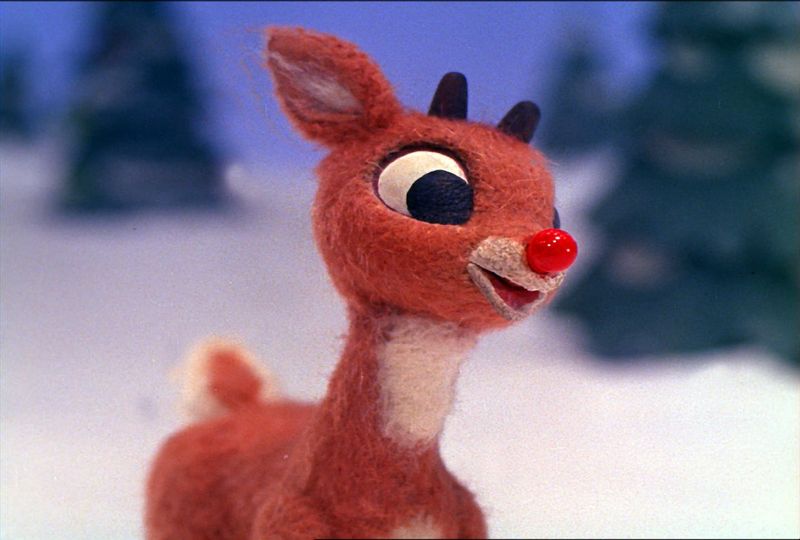
Rudolph the Red-Nosed Reindeer is a beloved holiday icon, but there’s an interesting twist regarding his gender. In reality, male reindeer shed their antlers in early December, while females keep theirs throughout winter. Thus, if Rudolph were working for Santa on Christmas Eve, he might actually be a she! This fun fact adds a layer of intrigue to the classic Christmas tale, challenging traditional narratives. It encourages us to rethink the stories we cherish and consider the wonders of nature and gender dynamics within the animal kingdom. Rudolph’s story is more complex than it seems.
Ancient Partnership: Reindeer and Humans
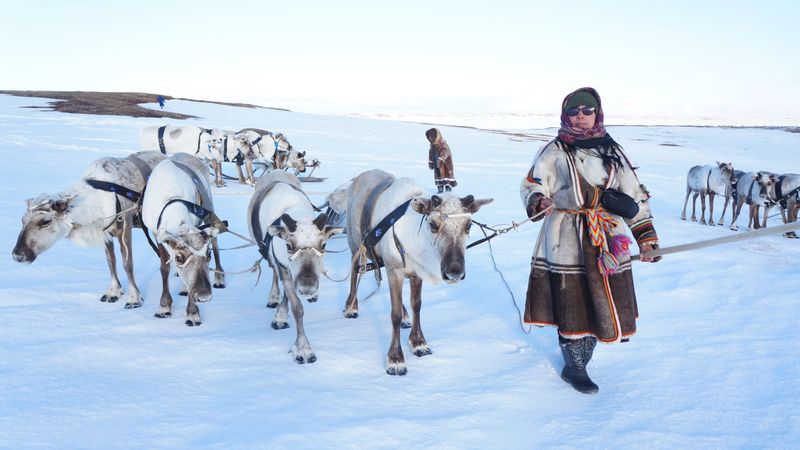
The relationship between reindeer and humans dates back thousands of years. Indigenous Arctic communities have relied on these animals for food, clothing, and transport. This ancient partnership is steeped in mutual respect and understanding, ensuring both species’ survival in a harsh climate. Reindeer herding is not just a livelihood but also a cultural tradition, passed down through generations. This enduring bond highlights the adaptability and resilience of both humans and reindeer. It underscores the importance of preserving cultural heritage and ecological balance in today’s rapidly changing world.
Reindeer’s Incredible Sense of Smell
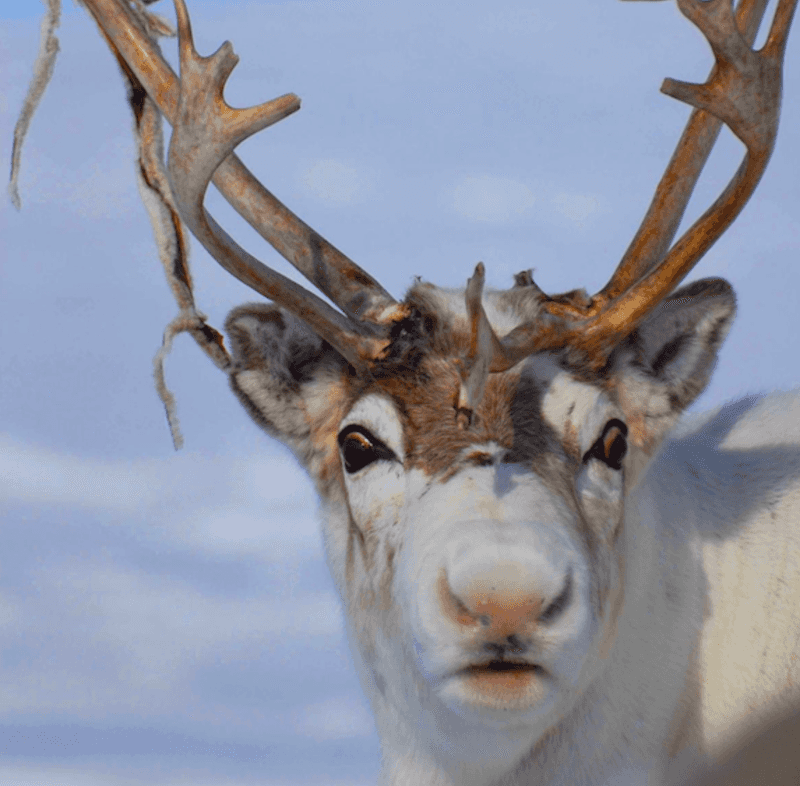
Reindeer possess a highly developed sense of smell, crucial for locating food beneath layers of snow. They can detect lichen, their primary winter diet, buried deep under the ice. This acute sense also aids in identifying predators and navigating the vast Arctic wilderness. The reindeer’s olfactory abilities are a testament to their evolutionary adaptations for survival. This sensory prowess ensures they can find sustenance even in the most challenging conditions. Their remarkable sense of smell is a key factor in their resilience and ability to thrive in the wild.
Reindeer’s Role in Sami Culture

Reindeer hold a significant place in Sami culture, an indigenous people of the Arctic regions. They are central to the Sami way of life, providing food, clothing, and tools. This deep connection is reflected in Sami art, folklore, and spiritual beliefs. Reindeer herding is a vital cultural practice, embodying the harmony between humans and nature. The Sami’s respect for reindeer is evident in their sustainable herding practices, which ensure the survival of both species. It’s a relationship that speaks to the importance of cultural heritage and ecological stewardship in a modern world.
Reindeer: Not Just for Santa
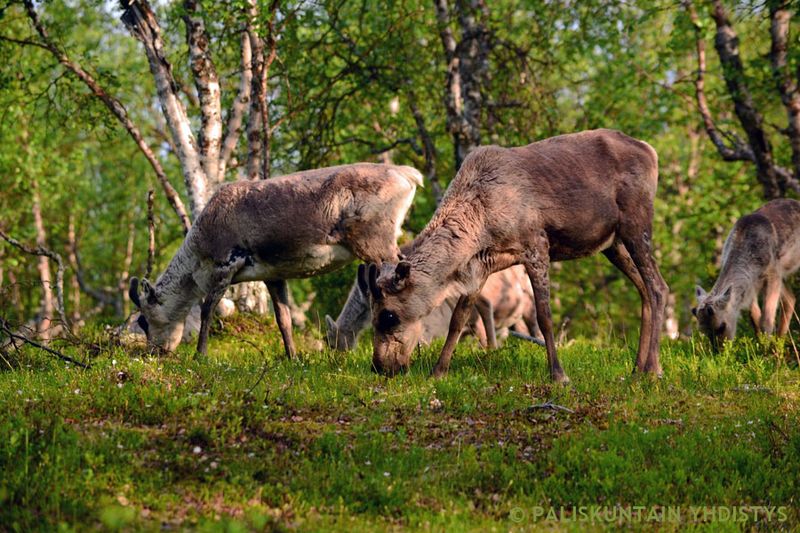
Reindeer are often associated with Santa Claus and winter folklore, but their lives extend far beyond the holiday season. In summer, they shed their thick winter coats and graze on lush green pastures. This seasonal change highlights their adaptability to diverse environments. Reindeer are migratory, following food sources throughout the year, ensuring they thrive in various habitats. This broader understanding of reindeer challenges the narrow holiday narrative, showcasing their resilience and versatility. Their life is a testament to nature’s cycles and the intricate balance within ecosystems.
Reindeer Hooves: Winter’s Secret Weapon
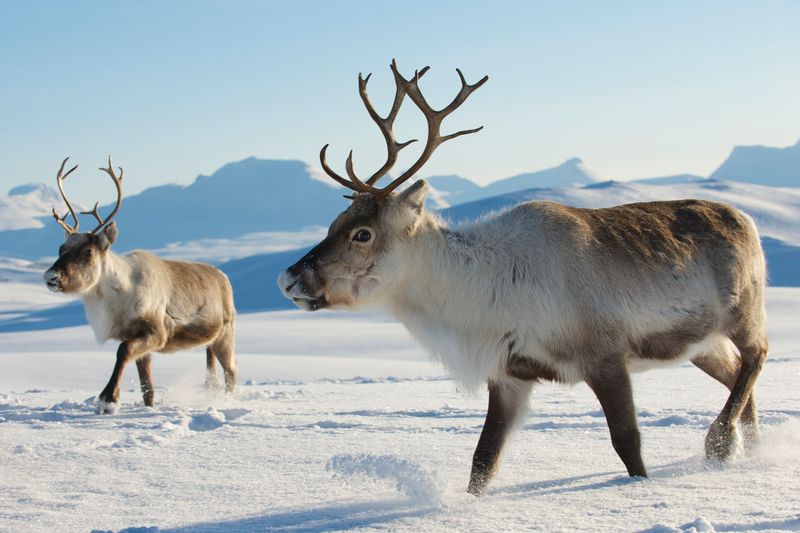
Reindeer hooves are specially adapted to their icy habitat, functioning like natural snowshoes. Their hooves spread widely to support their weight on snow and soft ground. In winter, the pads shrink to expose the sharp rims, providing traction on ice. This adaptation is crucial for survival in Arctic conditions, allowing reindeer to dig through snow to reach food. The hooves’ design illustrates nature’s ingenuity, enabling reindeer to thrive in challenging environments. These specialized hooves are a testament to the evolutionary marvels that equip reindeer for life in the wild.

